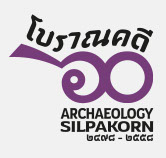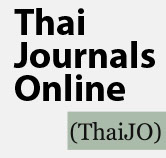
การแพร่หลายของการัณฑมกุฏ ในศิลปะอินเดียและเอเชียอาคเนย์
KARANDAMAKUTA IN INDIAN AND SOUTHEAST INDIAN ART
โดย เชษฐ์ ติงสัญชลี / By Chedha Tingsanchali
Damrong Journal, Vol 7, No.2, 2008
บทคัดย่อ:
การัณฑมกุฏ อันเป็นมงกุฎรูปแบบหนึ่งซึ่งมีลักษณะคล้ายหม้อซ้อนกันขึ้นไปนั้น เป็นมงกุฎประเภทหนึ่งซึ่งได้รับความนิยมในศิลปะอินเดียมาก่อน เกิดขึ้นครั้งแรกในศิลปะปัลลวะก่อนที่จะได้รับความนิยมในศิลปะโจฬะและยังแพร่ไปยังศิลปะปาละอีกด้วย โดยทางประติมานวิทยาแล้ว มงกุฎแบบนี้ใช้สำหรับประติมากรรมเทพชั้นรองรวมถึงเทวี
มงกุฎแบบนี้ ได้แพร่หลายไปยังศิลปะลังกา พุกามและทิเบตโดยปรากฏความแตกต่างเล็กน้อยระหว่างศิลปะที่ได้รับอิทธิพลอินเดียใต้และศิลปะที่ได้รับอิทธิพลปาละ มงกุฎแบบนี้ ยังได้ปรากฏในศิลปะสุโขทัยและอยุธยาด้วยโดยมีลักษณะที่ผสมผสานระหว่างสองสายอิทธิพลดังกล่าว
ABSTRACT:
A Karandamakuta is a type of crown with an imposing and inverted-pot shape. Originating from India, during the Pallava period, there purpose is to portray minor deities, in an iconographical illustration. The Karandamakuta are visible in the Chola sculptures, throughout South India, as well as influencing Pala art in Northern India.
Karandamakutas are also seen in Sri Lankan, Tibetan and Pagan art, with only slight differences between the Northern and Southern styles. Within Thailand Karadamakutas are often present upon statues of the Sukhothai and Ayuthaya regions, displaying a mixture of the northern and Southern styles.











